Benchmarking biodiversity
Strong biodiversity outcomes impact everything from soil health, ecosystem resilience, productivity, and plant and animal wellbeing. This is especially important in Australia’s rangeland environments.
With most of Australia’s goat meat and fibre production coming from rangelands, Meat & Livestock Australia (MLA) has funded the BioBrowser project to better understand the role of goats in the rangeland ecosystem, with the goal of establishing a biodiversity baseline for industry. This project will form the basis of the Goat Industry Sustainability Framework.
BioBrowser is being led by Enviro-dynamics, in partnership with Vanguard Business Services and Schuster Consulting Group. Outcomes will not only benefit the goat industry but also have potential to inform other rangeland livestock production industries − establishing the goat industry as leaders in this space.
What is a biodiversity baseline?
A biodiversity baseline serves as a reference point, capturing the biodiversity status of a region or property at a certain point in time. From this baseline, realistic targets or goals can be developed and trends over time measured.
In the context of the goat industry, this baseline will measure land use and highlight conservation outcomes, providing evidence to put goat meat and fibre on the front foot of supply chain sustainability reporting requirements.
“Defining measures for biodiversity is the first step to industry-wide innovation,” Enviro-dynamics Senior Advisor Leanne Sheriff said.
“As well as delivering data to inform sustainability frameworks which anticipate the trends in supply chains, a biodiversity baseline will generate value back to producers.”
This value generation captures components such as risk and environmental management, social capital, consumer demands, business decision-making, and future-state farm business reporting, which are already considered in supply chain and green business finance loans.
Research, consultation and practice
This project is underpinned by industry consultation and input. A formal reference group comprised of producers, researchers, ecologists and industry representatives is integral to the governance of the project.
“Projects like BioBrowser are critical for the industry to prove our environmental credentials as our industry continues to mature over time,” Goat Industry Council of Australia President, John Falkenhagen, said.
John and his peers have been involved at every step of the process and will remain part of the practical development of the biodiversity measures as they are piloted on-farm.
Currently, the project is following the below timeline of delivery:
| Phases | Status |
| 1. Research and stakeholder consultation | Complete |
| 2. Pilot to test practical measures for biodiversity and conduct a cost-benefit analysis | Underway − completion May 2026 |
| 3. Findings and reporting | Pending |
| 4. Communications extension and delivery | Pending |
Pilot farms are currently progressing through the formal set-up process to prepare for the capture of production and financial data and mapping, ahead of on-farm measurement of biodiversity.
Future impact on industry and goat production
This project is focusing on data-driven insights to form the foundation of future sustainability reporting, linking with rangeland condition, productivity and business performance. The investment will ensure the continued development and resilience of the Australian goat industry.
The benefits for producers are:
- practical tools and knowledge to measure and manage biodiversity on-farm
- readiness to participate in biodiversity or nature repair markets
- increased understanding of the link between healthy biodiversity and natural capital, and farm productivity, resilience and profitability
- a stronger market position – helping the industry demonstrate sustainability credentials to local and global markets and inform a narrative to help grow market share.



